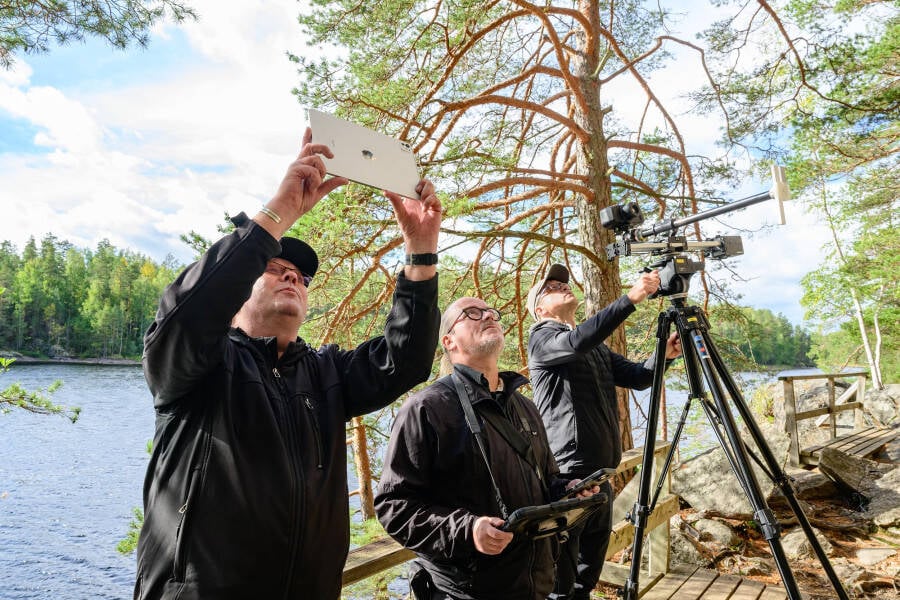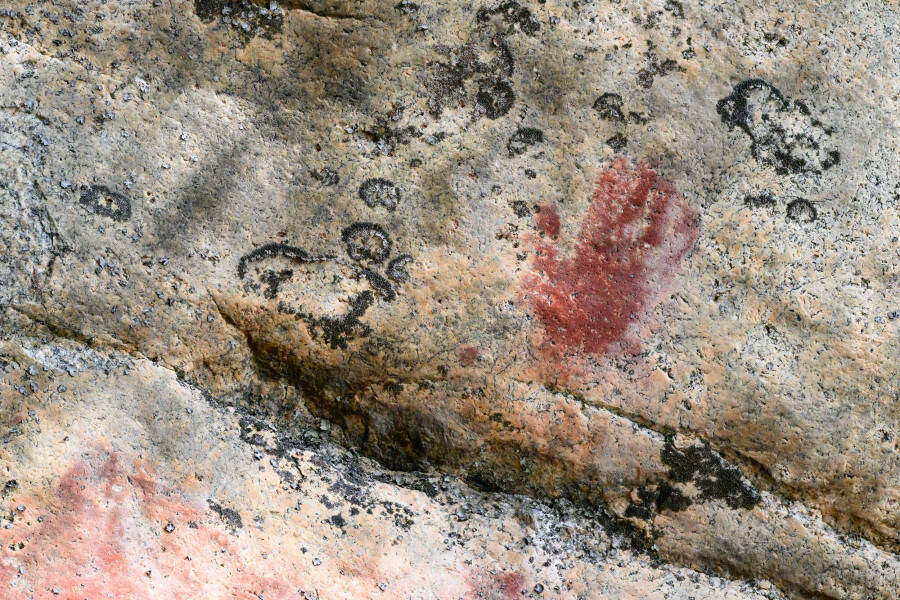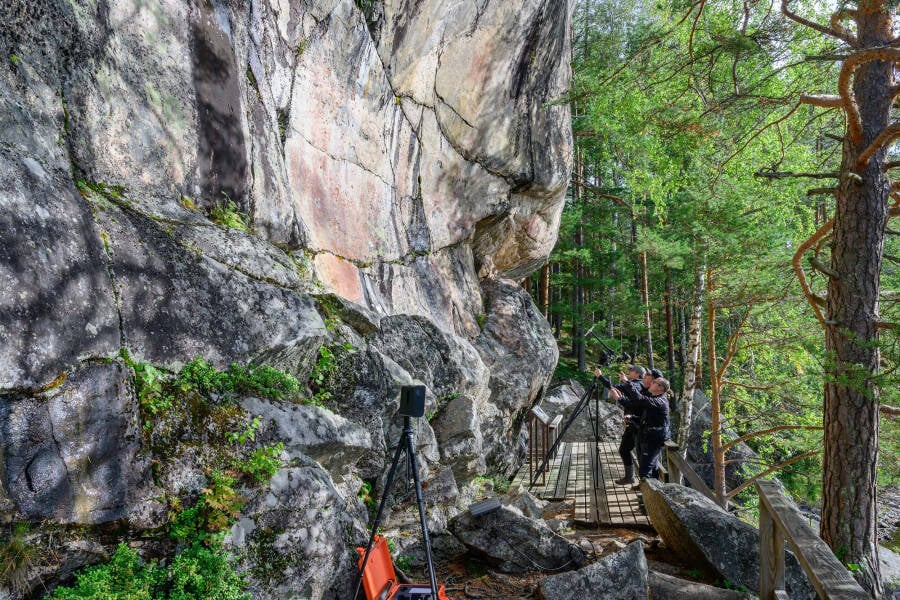Using hyperspectral cameras, researchers are able to see subtle differences in the red pigments of the rock art that are invisible to the naked eye.

University of Eastern FinlandScientists examine the rock paintings at Astuvansalmi.
Towering over the shore of Lake Yövesi near Ristiina, Finland, is a cliff covered in prehistoric rock art. The site, known as Astuvansalmi, features around 80 paintings of humans, animals, and other figures that date back some 5,000 years.
Now, thanks to the latest imaging technology, scientists are uncovering new patterns on the rocks. Hyperspectral cameras are picking up previously unknown images and revealing even more information about the existing art, such as how the pigments changed over time. This research is also creating a digital archive of the site, virtually preserving it for future generations.
How New Imaging Technology Is Revealing More About The Astuvansalmi Rock Paintings

University of Eastern FinlandThis latest research is adding to the 80 known rock paintings at Astuvansalmi.
A team that includes researchers from the University of Eastern Finland recently set out to Ristiina to study the rock art at Astuvansalmi using the latest imaging methods, including panoramic photography, 3D scanners, and hyperspectral cameras.
“We have been here for three hours now and have found three possible new patterns,” project coordinator Veikko Miettinen, a computer science professor at the University of Eastern Finland, said in a statement.
While there are dozens of clear rock paintings on the face of the cliff, there are also spots that have faded over time or that are concealed by moss. These areas could conceal previously unknown art. However, another purpose of this research is to learn more about the existing paintings.
“The idea of our research is to identify different red colors in the rock and determine their age and composition,” Miettinen explained. “At least three different shades of red can be distinguished from the rock just by looking at it with the naked eye.”
These various shades could indicate the use of different mixtures of paint over time. The art was seemingly made with emulsions, such as red pigment combined with egg whites, blood, or fat. If different colors mean different formulas, this study could determine which paintings were made at the same time or by the same artist.
Perhaps most importantly, however, this research is preserving the rock art for generations to come.
Creating A Digital Archive Of Finland’s Prehistoric Rock Art

University of Eastern FinlandThe research team uses state-of-the-art imaging technology to scan the paintings on the cliff.
Due to daily exposure to sunlight, rain, and snow over the past 5,000 years, the rock paintings at Astuvansalmi are slowly fading. They likely won’t last another 1,000 years, so it’s important for scientists to document them as accurately as possible for the future.
“Images of unclear objects are taken with a very precise hyperspectral camera and a system camera,” said Miettinen. “The imaging techniques and applications used to interpret the images are based on computer science.”
These photos and scans are creating a digital archive of the rock art that will virtually preserve it long after the paintings vanish from the cliff. What’s more, current scientists — and the general public — will be able to analyze the art without visiting the site themselves.
Ultimately, researchers hope that they may even be able to use virtual reality to recreate the site in museums, allowing visitors to don VR glasses and step into a 3D rendering of Astuvansalmi.
As research manager Dmitri Semenov explained in the university’s statement, “Digital storage ensures the accessibility of the paintings to everyone in the future.”
After reading about the new research into prehistoric rock art in Finland, learn about 11 of the most fascinating prehistoric animals. Then, discover more about 44 ancient artifacts that give insight into our past.





